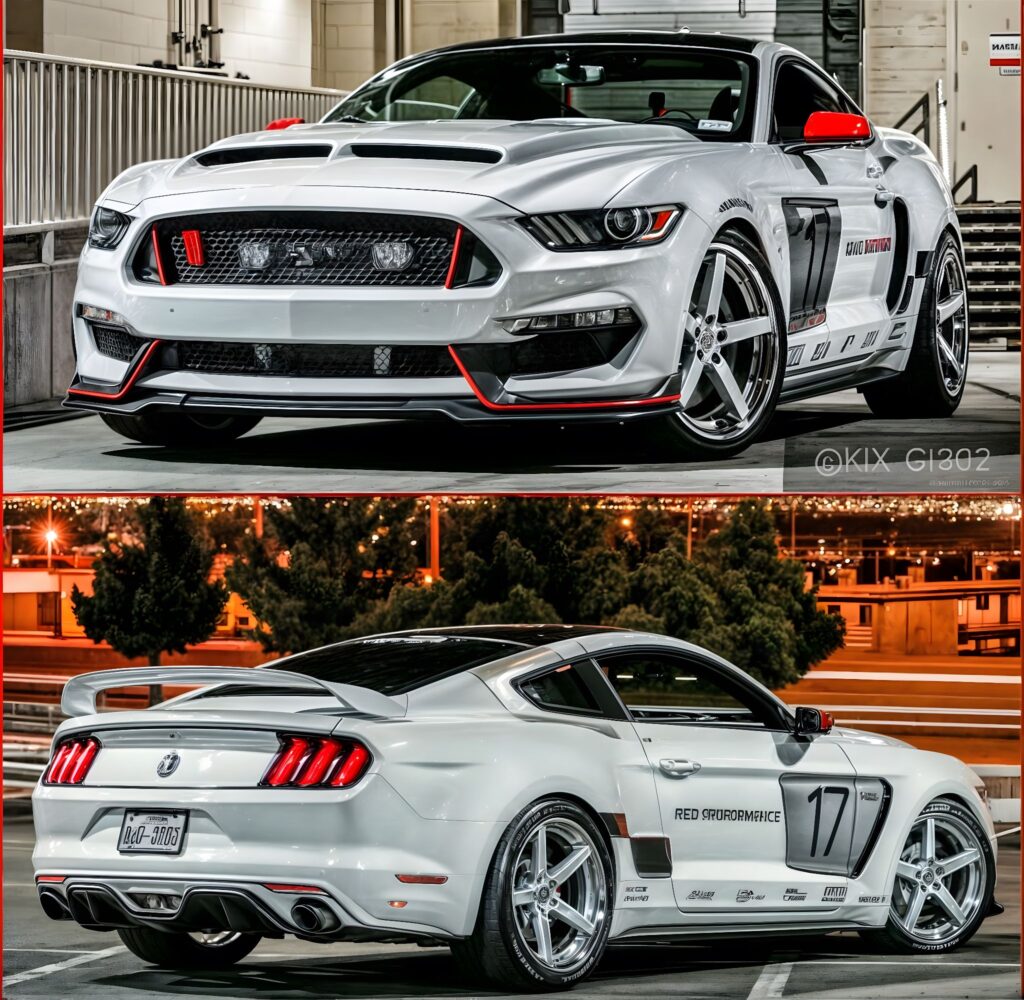Have you ever been stuck in traffic, daydreaming about a car that could make your heart race faster than a double espresso on a Monday morning? Well, let me tell you about the Ford Mustang—a car that doesn’t just turn heads but spins them like a top.
I remember the first time I saw a Mustang up close, at a local car show. It was a 1969 Mach 1, white as a summer cloud, with a shaker hood scoop that looked like it was ready to gobble up the road.
I was maybe 15, and I swear I heard angels singing—or maybe that was just the V8 engine revving. Either way, I was hooked. The Mustang isn’t just a car; it’s a legend with a history full of surprises.
So, buckle up, because I’m diving into three little-known Mustang milestones that redefined performance cars—and trust me, these stories come with some serious horsepower and a few laughs along the way.
The 1969 Mach 1 Shaker Hood Scoop—A Game-Changer That Looked Cool Doing It

Let’s kick things off with the 1969 Mustang Mach 1, a car that brought something wild to the table: the shaker hood scoop. Now, if you’re not a car nerd like me, you might be thinking, “A hood scoop? What’s the big deal?
Sounds like something I’d use to serve ice cream.” But hear me out—this wasn’t just any hood scoop. The shaker was a functional air intake that poked through the hood and was bolted directly to the engine.
When the engine revved, the scoop would shake like it was doing a little dance, hence the name. It wasn’t just there for looks—though, let’s be honest, it looked cooler than a polar bear in sunglasses.
That scoop fed cold air straight to the engine, boosting performance by improving combustion. More air, more power, more vroom. Simple, right?
The Mach 1 came with engine options like the 351-cubic-inch Windsor V8 or the monstrous 428 Cobra Jet, which could churn out up to 335 horsepower—pretty impressive for a car born in the late ‘60s.
This was the era when muscle cars ruled the roads, and the shaker hood gave the Mustang an edge, both on the street and at the drag strip. It wasn’t just about performance, though; it was about attitude.
The Mach 1 screamed, “I’m here to win,” and it backed that up with a design that made other cars look like they were just out for a Sunday stroll.
I’ll never forget the time I tried to impress a date by pointing out a Mach 1 at a car meet. I went on and on about the shaker hood, probably sounding like I was reciting a car manual.
She just smiled, nodded, and said, “That’s nice, but does it come in pink?” I laughed so hard I nearly dropped my soda. But honestly, that moment made me realize how much I love geeking out about cars—and the Mustang’s shaker hood is one of those details that still gets me excited.
It was a milestone because it blended style and substance in a way that performance cars hadn’t quite done before. Other manufacturers took notice, and soon, hood scoops became a staple on muscle cars. The Mustang didn’t just join the party—it brought the confetti.
The Fox-Body Mustang—A DIY Dream That Took the ‘80s by Storm
Fast forward to the 1980s, and we’ve got the Fox-body Mustang, a car that’s like the scrappy underdog of the Mustang family. Produced from 1979 to 1993, the Fox-body was built on Ford’s Fox platform, which was basically a lightweight, no-frills foundation. At first glance, it didn’t look like much.
The design was boxy, the interior was… let’s call it “functional,” and the base models weren’t exactly setting the world on fire with their performance.
But here’s the thing: the Fox-body became a legend because it was the ultimate blank canvas for car enthusiasts. This was the Mustang that said, “I’m not perfect, but I’m yours to make awesome.”
The Fox-body’s lightweight chassis and simple mechanics made it a favorite for DIY mechanics and racers. You could swap engines, tweak the suspension, or add a turbo without needing a PhD in engineering.
One standout model was the 1987–1993 Mustang GT with its 5.0-liter V8, which pumped out 225 horsepower—not bad for the time, especially when you consider the ‘80s were still shaking off the malaise of low-power cars from the ‘70s oil crisis.
But the real magic happened in garages across America. People turned Fox-bodies into drag racing beasts, drift machines, or show cars with wild paint jobs and even wilder mods. It was like the Mustang became the people’s champion, a car for anyone with a wrench and a dream.
I have a soft spot for the Fox-body because it reminds me of my uncle Dave, who had a beat-up ‘89 Mustang LX he swore was “a future classic.” He’d spend weekends tinkering with it in his driveway, usually with me handing him tools and pretending I knew what a carburetor was.
One time, he let me sit in the driver’s seat and rev the engine— I felt like I was in a Fast & Furious movie, even though I was 12 and the car wasn’t even in gear. Uncle Dave’s Mustang wasn’t pretty, but it had heart, and that’s what the Fox-body was all about.
It gave regular folks a chance to build something special, and that accessibility redefined what a performance car could be. It wasn’t just for the rich or the pros—it was for anyone who wanted to get their hands dirty.
The 2016 Shelby GT350’s Flat-Plane Crank—A Symphony of Speed
Now, let’s zoom into 2016, when Ford dropped a bombshell with the Shelby GT350 and its flat-plane crank V8 engine. If you’re scratching your head wondering what a flat-plane crank is, don’t worry—I had to look it up the first time I heard about it, too.
Basically, it’s a type of crankshaft design that makes the engine rev faster and sound like a European supercar. Most American V8s use a cross-plane crank, which gives that classic, burbling muscle car sound we all know and love. But a flat-plane crank?
That’s more like a Ferrari or a Porsche 911 GT3—it screams like a banshee and hits higher RPMs with ease.
The GT350’s 5.2-liter Voodoo V8 was the first production Mustang to use a flat-plane crank, and it produced 526 horsepower while redlining at a jaw-dropping 8,250 RPM. That’s not just fast; that’s “hold onto your hat and maybe your lunch” fast.
The sound alone was enough to make you weak in the knees—it was less of a growl and more of a howl, like a wolf that just found out it won the lottery. This engine wasn’t just about raw power; it was about precision.
The GT350 could carve up corners like a hot knife through butter, thanks to its magnetic ride suspension and track-tuned chassis. It was a Mustang that could go toe-to-toe with exotic sports cars, and it did it while still wearing the Mustang badge proudly.
I got to hear a GT350 in person at a track day a few years back, and let me tell you, it was love at first sound. I was standing near the pit lane, sipping a terrible cup of coffee, when this bright orange GT350 rolled up.
The driver blipped the throttle, and I swear the ground shook. It sounded so un-Mustang-like that I did a double-take. I ended up chatting with the owner, who told me he’d driven Porsches and BMWs but kept coming back to the GT350 because it felt raw, real, and just a little bit unhinged—in a good way.
That flat-plane crank wasn’t just a technical milestone; it was a statement. The Mustang could play with the big boys, and it didn’t need to change its stripes to do it. Perhaps that’s what makes the Mustang so special—it evolves, but it never forgets where it came from.
Wrapping It Up with a Bow—and Maybe Some Exhaust Fumes
So, there you have it—three Mustang milestones that prove this car is more than just a pretty face with a loud exhaust. From the shaker hood scoop that made the Mach 1 a street icon, to the Fox-body’s DIY charm, to the GT350’s flat-plane crank that brought supercar vibes to the pony car party, the Mustang has been redefining performance cars for decades.
Each of these moments shows how the Mustang doesn’t just keep up with the times—it sets the pace, often in ways you’d never expect.
If you’re a car lover like me, I’d recommend taking a deep dive into Mustang history yourself. Maybe track down a car show, or if you’re feeling brave, test-drive a modern Mustang and see if you can hear a bit of that Voodoo magic for yourself.
As for me, I’ll keep dreaming of the day I can park a GT350 in my driveway—preferably in orange, with an exhaust note that makes my neighbors jealous. Until then, I’ll leave you with a quote from Carroll Shelby himself: “I’ve always been asked, ‘What’s my favorite car?’ and I’ve always said, ‘The next one.’” Here’s to the next Mustang milestone—whatever it might be.
